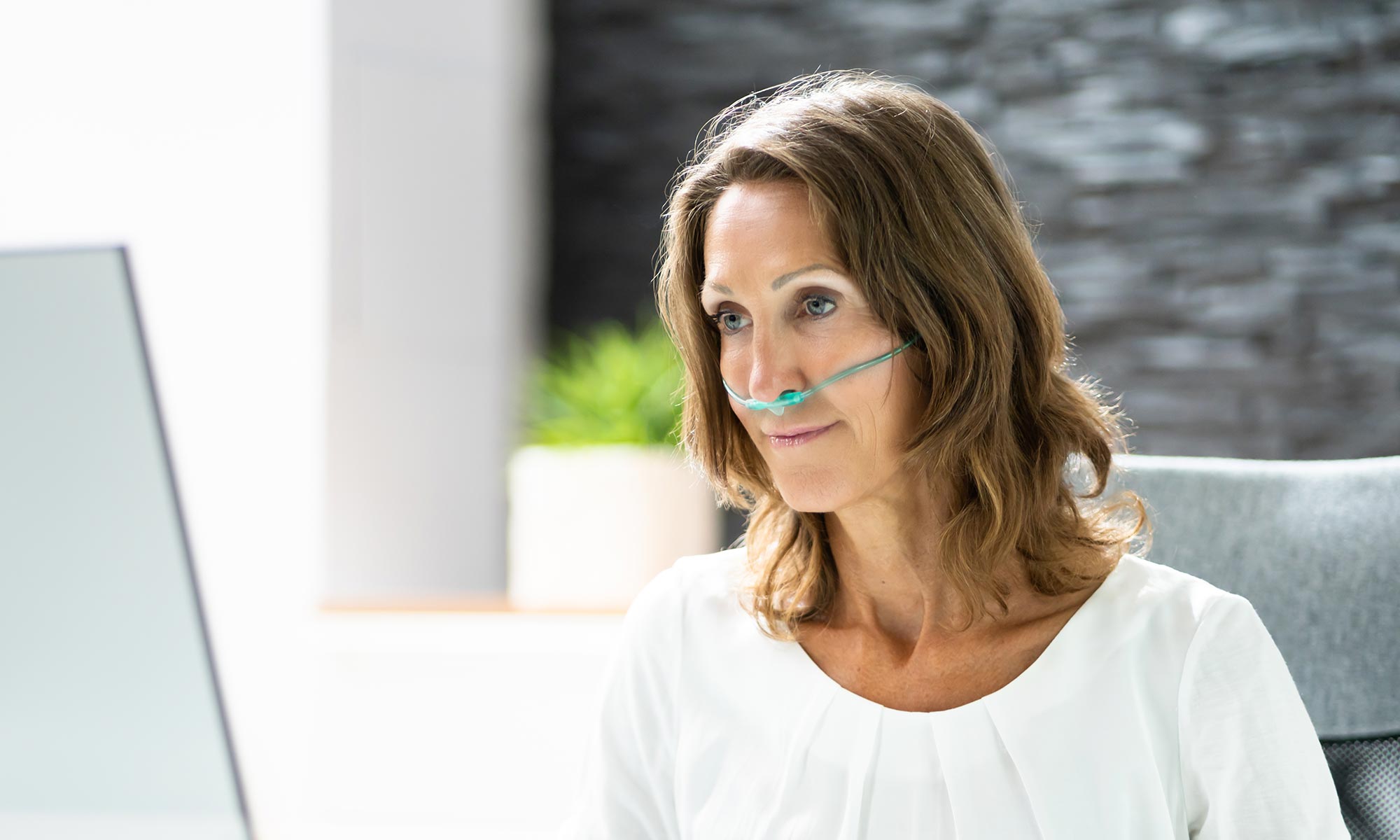
Supplemental oxygen for COPD
If your blood oxygen levels are chronically low even when you’re not exerting yourself, your provider may prescribe oxygen therapy.
Supplemental oxygen for COPD
Every cell in your body needs oxygen. When your lungs are damaged, they can’t absorb enough oxygen from the air you breathe. In turn, your blood doesn’t carry enough oxygen through your body. This can result in hypoxemia, or low blood oxygen. Hypoxemia can cause headaches, confusion and shortness of breath. The heart and the brain are particularly sensitive to, and can be damaged by, low oxygen levels.
To determine if you could benefit from supplemental oxygen, your healthcare provider will refer you for an assessment. If your blood oxygen levels are chronically low even when you’re not exercising or otherwise exerting yourself, your provider may prescribe oxygen therapy. You may need to use oxygen constantly or only at certain times, such as overnight.
Oxygen is not used to treat breathlessness, it is used to treat low blood oxygen levels.
Measuring lung function and blood oxygen
The six-minute walk test (6MWT) is used to determine how well your lungs function during exercise. Your blood oxygen will be tested before you start walk to get a baseline number. You will then be asked to back and forth in a room or up and down a hallway for up to six minutes. Your blood oxygen, heart rate and blood pressure are monitored. These numbers, along with how many “laps” you completed, will determine your capacity for aerobic exercise. This test may be used prior to beginning pulmonary rehabilitation or to determine if you would benefit from supplemental oxygen. Testing your blood oxygen levels as you exercise is sometimes referred to as “walking oximetry” testing.
An arterial blood gas (ABG) test can be used to determine how well your lungs are able to move oxygen into the blood.
Using a pulse oximeter to measure blood oxygen levels
A pulse oximeter is a small device used to check your pulse rate and how much oxygen your blood is carrying. It does this by passing beams of light through the blood.
The blood oxygen level measured with an oximeter is called your oxygen saturation level (or SpO2). In most healthy people, this number is between 94% and 100%. It can be lower in people with lung or heart conditions.
You may use a pulse oximeter at home to monitor your blood oxygenation before seeking medical attention. If you use a pulse oximeter, especially if you have dark skin, you should not rely on the pulse oximeter reading as the only measure of your oxygenation level.
Factors such as how the oximeter was used, your physical traits and medical conditions and the environment in which the reading was taken can all affect the accuracy of the results. Some reports indicate that pulse oximeter readings can be less accurate in people with dark skin. Reports have also indicated that pulse oximeter readings may be less accurate as oxygen saturation decreases.
